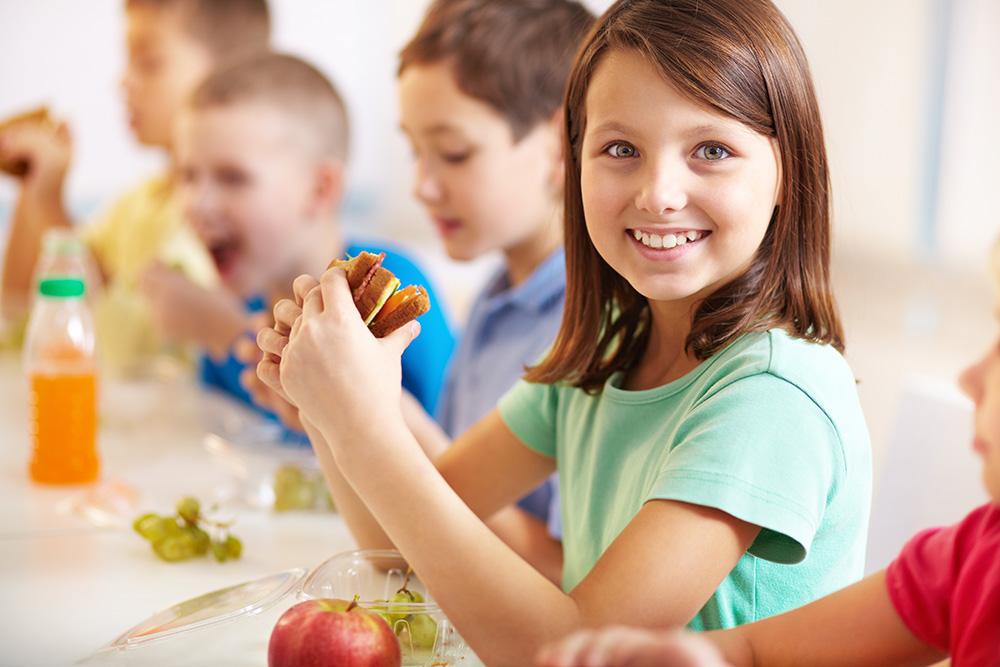Health & Safety
Healthy KidsWith good food habits and daily physical activity you will be well on your way to a healthy life. Easy to say, but sometimes not so easy to do!
Our busy lifestyles can be hard on our family’s health. Rushing to and from school and work can make it hard to find time to be physically active. We can also slip into the habit of choosing unhealthy snacks and take-away foods or spending our free time watching TV or in front of the computer.
What can I do?
There are five simple ways for your family to lead a healthy lifestyle and get back on track:
1. Get active each day
- Regular physical activity is important for the healthy growth, development and well-being of children and young people.
- They should get at least 60 minutes of physical activity every day, including vigorous activities that make them ‘huff and puff’.
- Include activities that strengthen muscles and bones on at least 3 days of the week.
- Parents should be good role models and have a positive attitude to being active.
2. Choose water as a drink
- Water is the best way to quench your thirst – and it doesn’t come with the added sugar found in fruit juices, soft drinks and other sweetened drinks.
- Reduced fat milk for children over two is a nutritious drink and a great source of calcium.
- Give kids whole fruit to eat, rather than offering fruit juices that have a lot of sugar.
3. Eat more fruit and vegetables
- Eating fruit and vegetables every day helps children grow and develop, boosts their vitality and can reduce the risk of many chronic diseases.
- Aim to eat two serves of fruit and five serves of vegetables every day.
- Have fresh fruit available as a convenient snack and try to include fruit and vegies in every meal.
4. Switch off the screen and get active
- Sedentary or ‘still’ time spent watching TV, surfing online or playing computer games is linked to kids becoming overweight or obese.
- Children and young people should spend no more than two hours a day on ‘small screen’ entertainment. Break up long periods of use as often as possible.
- Plan a range of active indoor and outdoor games or activities for your children, as alternatives to watching TV or playing on the computer.
5. Eat fewer snacks and select healthier alternatives
- Healthy snacks help children and young people meet their daily nutritional needs.
- Snacks based on fruit and vegetables, reduced fat dairy products and whole grains are the healthiest choices.
- Avoid snacks that are high in sugar or saturated fats – such as chips, cakes and chocolate – which can cause children to put on excess weight.

Fresh Tastes @ School
At school you learn about the kinds of foods and drinks you need everyday to stay healthy. It makes sense then that your school canteen is full of healthy food and drinks so you can put into practice what you have learnt in the classroom.
Healthy food also helps your brain to work better and makes you feel more alert – just what you need to get you through the school day.
Healthy food also looks and tastes great!
The Fresh Tastes @ School strategy is a NSW Government initiative that supports all schools with a canteen to go healthy and fill the menu with lots of delicious healthy choices that not only taste good but are good for you.
If you want to learn more about the foods that are suitable for sale in a school canteen go to the Canteen Menu Planning Guide. It explains the Red, Amber, Green food spectrum concept and provides plenty of examples of food that fit into each segment.
Look for the lights at your canteen!
Your canteen will have a traffic light colour chart to help you make healthier choices when buying something from the canteen.
GREEN foods can be eaten everyday as part of a healthy diet, so GO right ahead. Choose and enjoy them! Green foods include: fruit, vegetables, yoghurt, sandwiches, some milks, some hot food and water.
AMBER foods are not as healthy for you, so go SLOW and choose carefully. Too many of these foods could make you put on weight. Amber foods include: fruit juice, big cartons of milk and some hot foods.
RED foods mean you need to STOP! They are not healthy for you and you should only have them occasionally. Red foods include: chocolates, fizzy drinks, chips, pies and sausage rolls.
Remember: GREEN foods can be tasty and interesting. They also make you feel better throughout the day.







